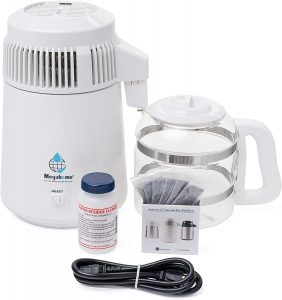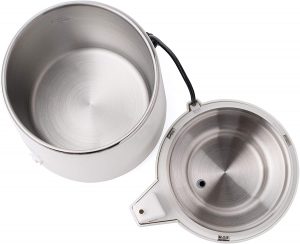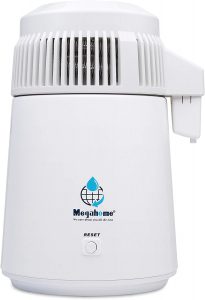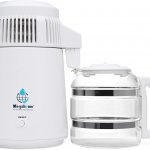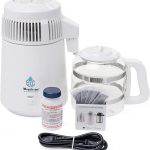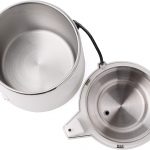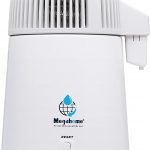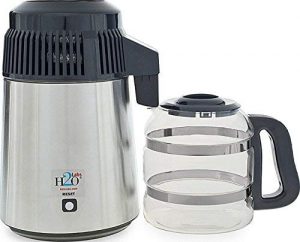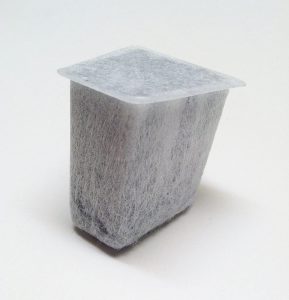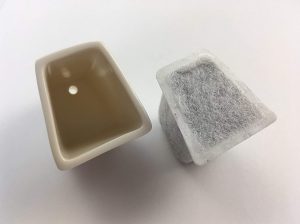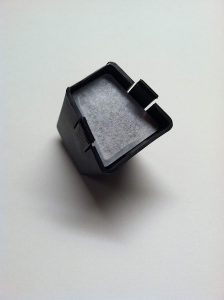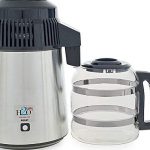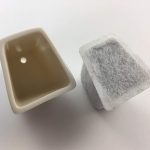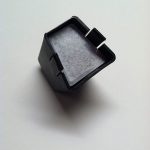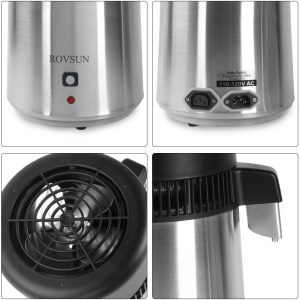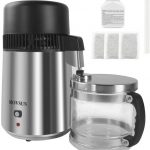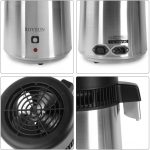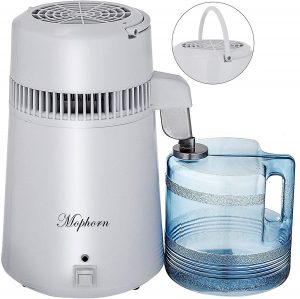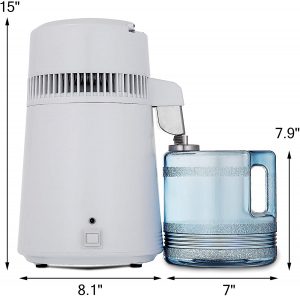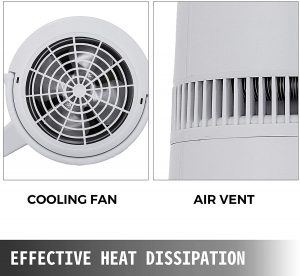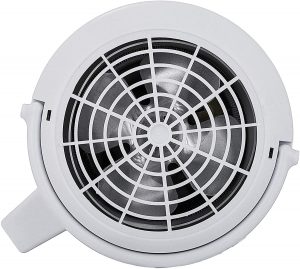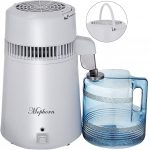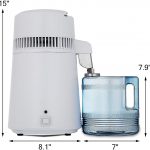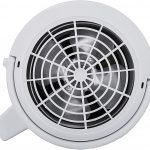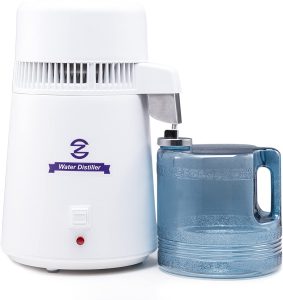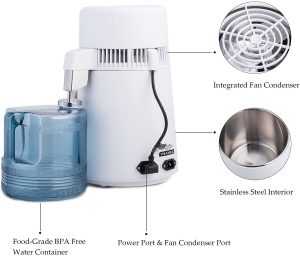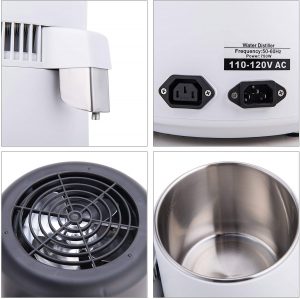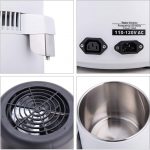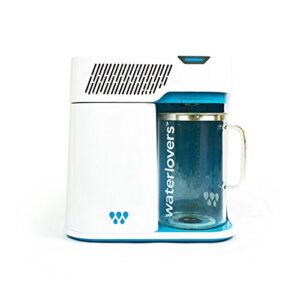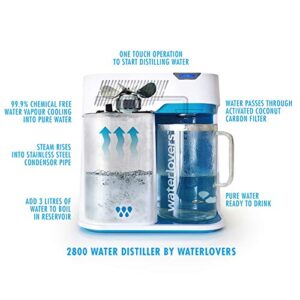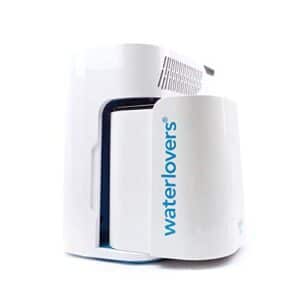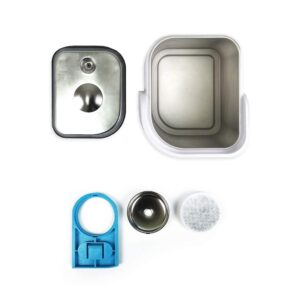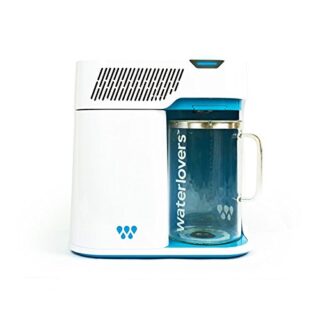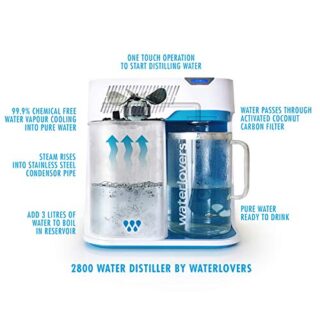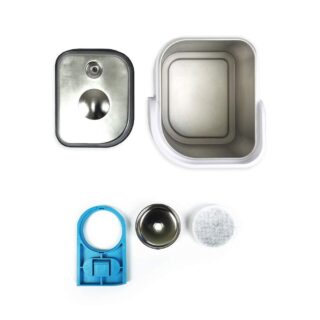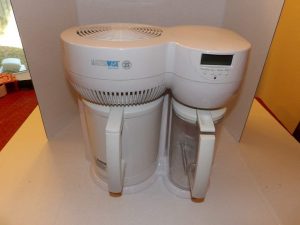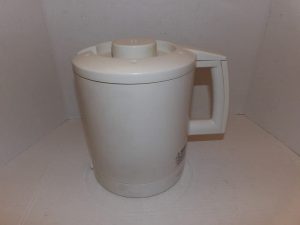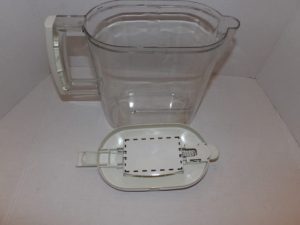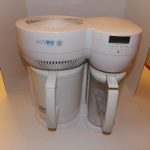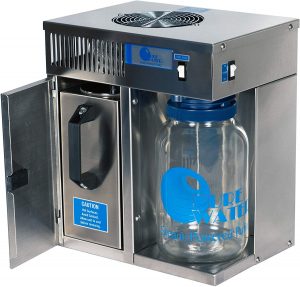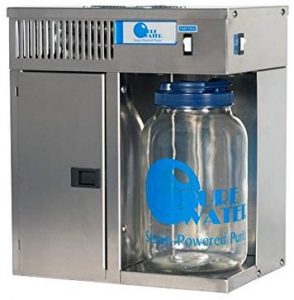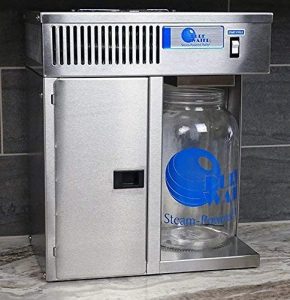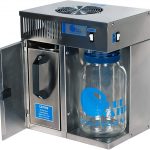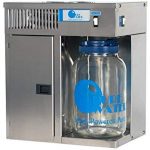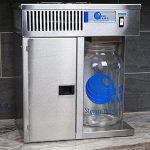Distilled water is one of the cleanest forms of water for drinking and cooking. It has virtually none of the minerals, unhealthy chemicals, bacteria or viruses that are present in tap water, which makes it a healthier choice and allows you to track exactly what’s going into your body. In this guide, we’ll review choices for the best water distiller to turn tap water into a clean source of water in your home.
To ensure you’re getting a product that will not only produce truly clean water but last for a lifetime and provide features that make it easy to use, it’s important to buy a high-quality water distiller. Striving to identify the best water distillers on the market, we combed through technical specifications of many water distillers currently on offer and compared hundreds of customer reviews. The result is our list of the 8 best water distillers, whether you’re on a budget, looking for specific features, or a new or experienced user of water distillers.
The table below provides a brief introduction to our 8 favorite water distillers with a quick view of their unique features. For more information, check out our full product reviews below. Once you’re familiar with the 8 distillers we picked, the Buying Guide offers more information about how water distillers work and what features to look for in order to help you choose the water distiller that is best for your needs. Finally, our guide wraps up with our top pick for a water distiller.
-
Editor’s Choice: Nutriteam's Megahome Countertop Water Distiller, Glass Collection"Manual 4L distiller with 1gal/5.5h capacity, full stainless steel interior, glass nozzle insert and and glass carafe; the only Underwriters Laboratory listed distiller."
-
"Manual 4L distiller with ca. 1gal/6h capacity; full stainless steel interior and glass nozzle insert, and proprietary activated carbon pods."
-
Full Package Distiller: ROVSUN 4L Countertop Water Distiller"Manual 4L distiller with ca. 1gal/4h capacity; full stainless steel interior and glass nozzle insert; auto-off at over 320℉; FDE&CE listed."
-
Budget Pick: Pure Water Distiller’s 4L Countertop Water Distiller"Manual 4L distiller with ca. 1gal/4h capacity; food-grade stainless steel interior and food-grade BPA-Free plastic container; auto-off at over 320℉."
-
Safety Feature Pick: CO-Z 4 Liter Home Countertop Water Distiller Machine"Manual 4L distiller with 6gal/24h capacity; food-grade stainless steel interior and food-grade BPA-Free plastic container; auto-off at over 300℉."
-
Best Smart Water Distiller: Waterlovers 2800MKII"In order to prevent over calcification and burning of the residues at the reservoir bottom, the water distiller shuts down by itself though, reserving about 5 – 10ml of water in it."
-
Best with Electronic Display: Waterwise 8800 Water Distiller"Manual distiller with an electronic display,distills up to 6gal/24h; features full stainless steel boiler and BPA-free, shatterproof carafe."
-
Fully Stainless Steel: Pure Water Mini-Classic CT Counter Top Distiller"Manual 1-gallon distiller with 3L/3.5h capacity; full stainless steel construction with glass carafe."
Top 8 Water Distillers Review 2021
Nutriteam's Megahome Countertop Water Distiller, Glass Collection – Editor’s Choice
- Manual 4L distiller
- Distill capacity: 1 gallon (3.7L) per 5.5 hours
- Full 304 stainless steel interior
- Glass nozzle insert
- UL (Underwriters Laboratory) listed
- 1-year warranty
Although pricey, this distiller is one of the all-around best on the market in terms of purity and capacity. Its quality is evident as it is the only water distiller currently listed by Underwriters Laboratory – the UL insignia that is omnipresent on all other household appliances and signifies safety.
Water in this distiller never touches plastic thanks to the fully food-grade stainless steel interior and the glass nozzle insert. The latter ensures that once the steam is recondensing into pure water, your water touches only glass from the nozzle to the glass carafe for the highest water quality. Although the distillation speed of one gallon every 5-6 hours may not seem fast, this is also designed with purity in mind – a faster boiling speed would increase the likelihood of volatile organic compounds being left in your water.
The distiller has a 4-liter reservoir, which is standard for household distillers of this class so that the distiller itself does not use up too much valuable kitchen space. However, that can be limiting if you need a large volume of water or will not be home throughout the day, since producing at full capacity requires manually refilling the reservoir 4 times each day.
What makes it stand out?
- Stainless steel interior, glass nozzle insert, and glass carafe for quality
- Water never touches plastic
- Slow boil for removing volatile organic compounds
Which disadvantages must you keep in mind?
- On the pricey side
- Manual 4-liter cycle limits production
H2o Labs Best-In-Class Stainless Steel Water Distiller – Runner-up
- Manual 4L distiller
- Distill capacity: over 16 liters per day (4 cycles)
- Full 304 stainless steel interior
- Glass nozzle insert
- Proprietary activated carbon pods
This water distiller produces highly purified water with a significant amount of design intention focused on keeping your water clean. The interior is comprised completely of food-grade stainless steel, but this distiller goes even one step further – it features a glass nozzle insert so that your water never even touches the stainless steel, but only glass throughout the distillation process. It also includes activated carbon filter pods, which aid in the process of removing volatile organic compounds. In addition, the distiller uses a smaller heating unit that boils water slowly so that there is less chance of the steam mixing with volatile organic carbons that are boiled off earlier in the heating process. Finally, the carafe that the water is output into is also glass for purity.
The distiller itself has a reservoir capacity of 4 liters and is capable of up to 4 cycles per day. This is not as much water as comparable units and full output means that you’ll need to be changing out the water every 6 hours – which for many people includes the middle of the night.
The main downside to this distiller is price – it is expensive upfront and replacing the activated carbon pods every several months can add up. However, the smaller capacity and smaller heating unit mean that this distiller uses less energy than comparable models, which can save money on your energy bill in the long run.
Why are we impressed?
- Extremely pure water thanks to glass nozzle insert and slow boil
- Carbon filters improve water taste
What negatives must you be aware of?
- Requires 4 manual cycles per day for full output
- Expensive
ROVSUN 4L Countertop Water Distiller – Full Package Distiller
- Manual 4L distiller
- Distill capacity: 1L/hour
- Full 304 stainless steel interior
- Glass nozzle insert
- Auto-off when temperature is over 320℉
- FDE&CE listed
- 1-year warranty
This distiller is great for home use, both because of its capacity and its included safety features. The distiller is rated to distill 4 liters in four hours, for a total potential capacity of more than 20 liters – however, 16 liters per day is a more realistic estimate since the 4-liter reservoir needs to be manually refilled and the cycle manually started.
The interior is fully food-grade stainless steel, ensuring that your water never comes in contact with plastic during the distillation process. Even better, the nozzle includes a glass insert so that from the point of condensation on to the carafe, your water only contacts glass to ensure purity. The distiller also includes activated charcoal sachets in the interior, which serve to filter out volatile organic compounds better than boiling alone and also improve the taste of the distilled water.
A big advantage to this distiller is the integrated temperature safety switch. At temperatures higher than 300ºF, the unit will automatically switch off to prevent overheating. This safety feature provides comfort in knowing that your home is safe if you turn the distiller on and then leave the house for the day.
Why is it special?
- Stainless steel interior and glass nozzle insert
- Integrated temperature safety switch
What are the flaws?
- Activated charcoal sachets need to be replaced every few months
Pure Water Distiller’s 4L Countertop Water Distiller – Budget Pick
- Manual 4L distiller
- Distill capacity: 1L/h
- Distiller material: food-grade 304 stainless steel
- Container material: food-grade BPA-Free Plastic
- Auto-off when temp is over 320℉
This water distiller is inexpensive and perfect for those looking for distilled water on a budget. The design is extremely comparable to other manual distillers, with a 4-liter reservoir and a food-grade stainless steel interior. However, the price is brought down significantly since the distiller lacks a glass insert in the nozzle and does not use carbon filters in the distillation process. It also uses a plastic carafe, although this can be a red flag for those who are truly serious about water purity. However, in that case, the plastic container can easily be exchanged for a glass carafe after-market.
The total capacity of this distiller is also on par with other distillers, at 24 liters per day with a more realistic output of around 16 liters per day. However, users note that this distiller is unusually loud for a water distiller when turned on.
One of the features of this distiller that even more expensive distillers lack is the temperature safety switch. Above 320℉, the distiller will automatically shut down in order to prevent overheating. This provides reassurance when setting the distiller to run and then leaving your home for the day or heading to sleep for the night.
What are our favorite features?
- Inexpensive
- Temperature safety switch
What could be better?
- Loud when distilling
- Plastic carafe
CO-Z 4 Liter Home Countertop Water Distiller Machine – Safety Feature Pick
- Manual 4L distiller
- Distill capacity: up to 6 gallons (22.7 liters) per 24 hours
- Full 304 stainless steel interior
- Food-grade and BPA-free plastics
- Automatic switch-off when the temperature exceeds 300ºF
- 1-year limited warranty
If you’re on a budget and want a large volume of distilled water, this distiller offers a huge capacity for the price. The distiller is capable of putting out up to 6 gallons each day. However, note that this requires refilling the distiller every few hours, since it only has a 4-liter reservoir, so 4 gallons is a more reasonable expectation of what you will actually produce. But the difference also indicates that the rate at which distilled water is produced compares very favorably to more expensive models.
Another nice feature of this distiller for home use is that it has an internal safety switch – when the temperature within the distiller chamber reaches 300ºF, the distiller will automatically shut off. This is a great feature for giving peace of mind when you turn on the distiller before going out for the day or before going to sleep.
In terms of purity, the entire interior of the distiller is food-grade stainless steel. However, the carafe is plastic and not as easy to pour from as carafes on other distillers. The faster distillation rate, while appreciated in some situation, also increases the chance that volatile organic compounds will not be completely removed from the steam chamber prior to the water boiling.
What do we love it for?
- Fast distillation
- 6 gallon per day capacity
- Automatic temperature shut-off
- Inexpensive
What were we disappointed with?
- Small reservoir capacity limits total realistic distillation volume
- Potential for volatile organic compounds to remain
Waterlovers 2800MKII – Best Smart Water Distiller
- Automatic distiller
- Distill capacity: 5.84 gallons (22.4L) per 24 hours
- 0.73-gallon glass jug
- 4 mm Borosillicate glass jug and 304 stainless steel boiling reservoir
- 1-year limited warranty
Asides the basic function of providing clean and distill water that you want from your distiller, you would also want one that would last a reasonable amount of time before requiring replacement. Both features are what you get in this Waterlovers 2800MKII.
The distiller has automatic functions to save you time and energy. At the same time, the auto function of the distiller helps to keep it in check and prevent destruction. For instance, in order to prevent over calcification and burning of the residues at the reservoir bottom, the water distiller shuts down by itself though, reserving about 5 – 10ml of water in it. The water left over is important to reduce the frequency of cleaning the distiller as well as prolonging its lifespan.
Furthermore, the distiller has to prevent likely danger. The most apparent one being under the cover of the reservoir. Without this cover on the distiller, the machine would not come on.
In every 24 hours, the Waterlovers 2800MKII can distill about 5.84 gallons. This is also equivalent to 22.4 litres. The capacity of the glass jug is 0.73 gallons while that of the reservoir is 304 gallons.
The glass is a 4 mm Borosilicate type while the reservoir is made of stainless steel. The water distiller comes with a one year limited warranty.
What makes it stand out?
- Advanced safety sensors
- Energy saving feature
- Large capacity
Which disadvantages must you keep in mind?
- 1500W power output
Waterwise 8800 Water Distiller – Best with Electronic Display
- Manual distiller
- Distill capacity: 6 gallons (22.7 liters) per 24 hours
- Full stainless steel boiler
- BPA-free, shatterproof carafe
- Electronic display
- 1-year limited warranty
Unlike most other water distillers, this unit from Waterwise comes with an electronic display. That may sound unnecessary at first, but it opens up a world of possibilities. Perhaps the most important is that it enables you to set the distiller on a timer so that it can, for example, turn on and begin distilling water overnight so you have fresh water when you wake up. It also gives you information about the filter lifespan, which is great for those who will otherwise forget to change the carbon filters after several months of use.
One cycle on this distiller is 4 liters, comparable with other manual distillers for home use. Yet, this distiller is oddly shaped and takes up more space than comparable distillers and users report that it is difficult to clean.
While the interior of the distiller is fully stainless steel, those who are picky about their water coming into contact with plastic may not appreciate the plastic carafe. However, the carafe is BPA-free and the advantage of plastic over glass is that it is shatterproof. This distiller has the benefit of incorporating carbon filters into the distillation process (like, for example, water filter pithcers), which are more effective at removing volatile organic carbon compounds and give the resulting water a better taste.
What stands out?
- Electronic display for timed start
- Stainless steel interior and carbon filters
What cons did we manage to find?
- More expensive compared to similar distillers
- Plastic carafe
- Bulky design
Pure Water Mini-Classic CT Counter Top Distiller – Fully Stainless Steel
- Manual 1-gallon distiller
- Distill capacity: 3L per 3.5 hours cycle
- Stainless steel construction
This distiller is great for those who need a large volume of distilled water, but don’t want to make the jump to an industrial-scale automatic distiller. The distiller is capable of producing 3 liters every 3.5 hours, which is much faster than comparable distillers for home use. However, it achieves this by venting volatile organic compounds more quickly from the steam chamber so that they do not mix back in with the steam prior to condensation.
This distiller is fully food-grade stainless steel, both on the interior and exterior. Some people appreciate this design as it completely eliminates plastic, even though most plastic exterior water distillers do not allow water to contact the plastic. The glass carafe invites storing distilled water, as it is about the same size as an inexpensive glass mason jar.
The main downside to this distiller is the price – it is more than twice the cost of comparable distillers. Given that the feature set does not result in purer water or highly reduced energy use, it is difficult to justify this price unless you are determined to have a fully stainless steel unit.
Why did it make our list?
- Fully stainless steel
- Fast distilled water production
What is not ideal about it?
- Pricey
- Some people prefer glass nozzle to stainless steel after condensation
What is a water distiller?
A water distiller is simply a machine that boils water and separates pure water from any impurities it may have contained, such as minerals, bacteria, or chemicalsб and it can even distill alcohol. The principle behind a distiller is that when water boils into steam, it leaves behind any minerals or heavy, solid particulates that may have been dissolved or floating in the water. The steam, now separated from these contaminants, is then re-condensed into a clean container as pure water. Water distillers can also remove volatile organic chemicals, many of which can be unhealthy, since these chemicals tend to boil off at a lower temperature than water. So any gases that are produced before the water boils can also easily be removed from the steam chamber.
How can you use distilled water?
The best and most common use of distilled water is for drinking and cooking. After all, many people prefer distilled water because they don’t want to ingest the same minerals and contaminants that are present in tap water. Along the same lines, distilled water can be used as drinking water for pets or plants – in the latter case, to control the minerals that are in the soil. Distilled water is required for many at-home aquariums, since fish are highly sensitive to water purity. Many people who use distilled water also use it to wash their hair and skin, since it lacks the hardness of mineral-filled tap water. And because there are no hard minerals to precipitate and cause clogging, distilled water is a great choice to use for irons and car radiators.
Advantages and Disadvantages of Using a Water Distiller
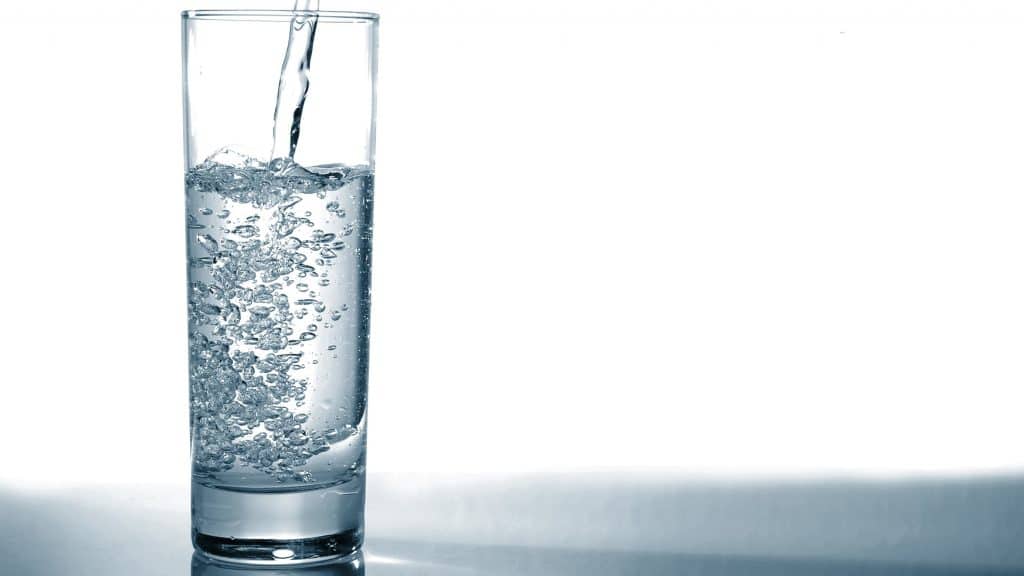 The main advantage of a water distiller is having a constant source of clean, pure water in your home. This can be extremely valuable if you have issues with impurities or bacteria that cause illness in your normal source of water. In addition, a water distiller can actually be used to convert salty ocean water into purified drinking water. You can even find the best water distiller for alcohol – the results might surprise you greately.
The main advantage of a water distiller is having a constant source of clean, pure water in your home. This can be extremely valuable if you have issues with impurities or bacteria that cause illness in your normal source of water. In addition, a water distiller can actually be used to convert salty ocean water into purified drinking water. You can even find the best water distiller for alcohol – the results might surprise you greately.
The main disadvantages of a water distiller are that it is slow and uses a lot of energy. If you need large volumes of water at a single time and plan to use a distiller, you will need to plan ahead and stockpile purified water from the distiller for days in advance. In addition, distillation is an energy-intensive process, so expect to see your electricity bills go up if using a distiller frequently. Another disadvantage, albeit minor, is that some people do not like the taste of water after it has been distilled, but this problem can be solved by drinking the water shortly after distillation.
Important Features
Type
There are manual and automatic water distillers available on the market today. A manual distiller, as the name suggests, can only be used manually. You’ll have to add water to it and empty the tank each time the distillation cycle is over to start a new one. An automatic distiller, by contrast, does not need to be manually filled and turned on. You just hook it up to an existing water line, which allows the distiller to automatically distill the needed amount of water every time water is taken out. The type of a water distiller to choose depends on your needs. If you don’t need lots of distilled water every day, there’s no point to pick a water distiller, since it’s capacity is higher and it consumes more energy than manual ones.
Capacity
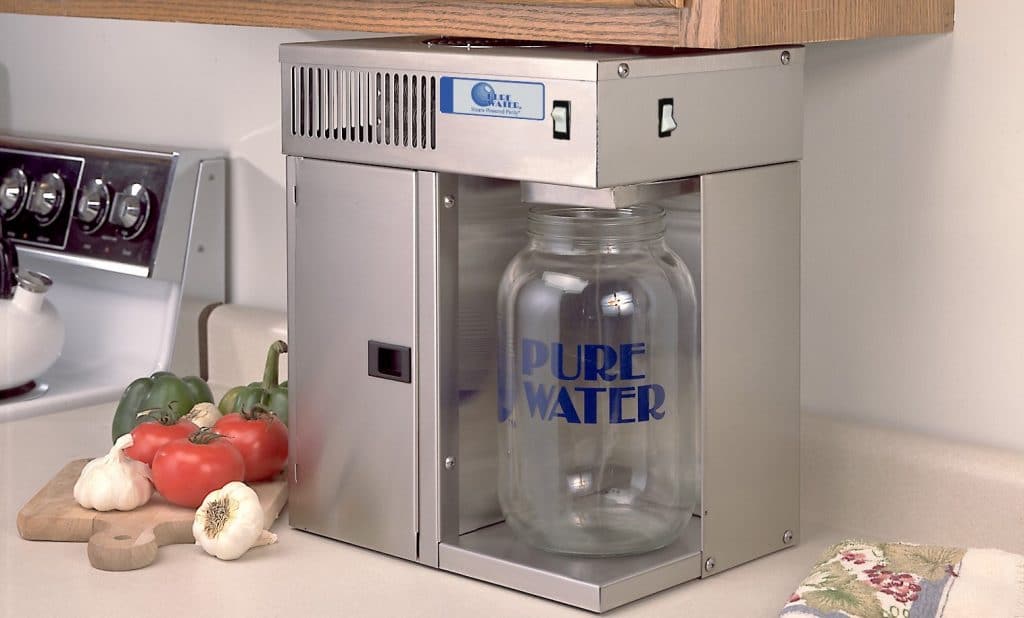 One of the most important features of a water distiller is its capacity. The capacity that often scales with the unit cost, so it is important to think about how much distilled water you are likely to use each day when considering what capacity you need. An easy way to determine this is to track how much tap water you use at home over the course of an average day.
One of the most important features of a water distiller is its capacity. The capacity that often scales with the unit cost, so it is important to think about how much distilled water you are likely to use each day when considering what capacity you need. An easy way to determine this is to track how much tap water you use at home over the course of an average day.
Capacity is typically measured as how much water a distiller can distill over 24 hours, but considerations like the cycle length and the water storage capacity can also be important if you are not home frequently to refill the distiller and restart the distillation cycle.
Materials
Another important consideration is what type of material the distiller is made from. Typically, stainless steel or glass parts are preferred because they do not leach chemicals into the water under heat during the distillation process – just make sure they are labeled as food-grade materials to ensure they are up to cleanliness standards after the manufacturing process. Stainless steel and glass are also easy to clean, which is a major advantage.
Although plastic is less preferable, it is cheaper. However, be sure to look for BPA-free plastic distillers, since plastics made with BPA will leach chemicals into the distilled water you were trying to remove chemicals from. The same consideration of materials apply for the container the water is output into, although because the water will not be as hot, the material is not as much of a concern.
Energy consumption
 Distillers run on electricity, and many people will be running their distillers 24/7. Therefore, it is important to consider how much energy a distiller requires – a slightly lower wattage distiller can lead to large cost savings on your electricity bill over the course of a month. If you plan to use a distiller only infrequently, for example for a one-time specific use such as filling an aquarium, it may be more cost-effective to buy bottled water.
Distillers run on electricity, and many people will be running their distillers 24/7. Therefore, it is important to consider how much energy a distiller requires – a slightly lower wattage distiller can lead to large cost savings on your electricity bill over the course of a month. If you plan to use a distiller only infrequently, for example for a one-time specific use such as filling an aquarium, it may be more cost-effective to buy bottled water.
Filtration
Although distillation obviates the need for filtering water, some people do not appreciate the taste of distilled water. Some water distillers run the distilled water through an integrated carbon filter in order to change the taste of the water. While this feature does not affect the quality of the water, whether it is important to you depends on how picky you are about the taste of your water.
Conclusion
A water distiller can be a great way to convert tap water into a source of purified water for drinking or a variety of household uses. While getting into a rhythm of setting the distiller to run may take some getting used to for manual distillers, over time the benefits of these units are well worth it for many people. Now that you’re familiar with 8 of the best water distillers on the market and know what to look for in a water distiller, it should be easy to find the water distiller that fits your needs.
The post 8 Best Water Distillers – Your Guide to Clean Water in 2021 appeared first on HouseAndBeyond.org.
8-Best-Water-Distillers.mp4 (139kB)


